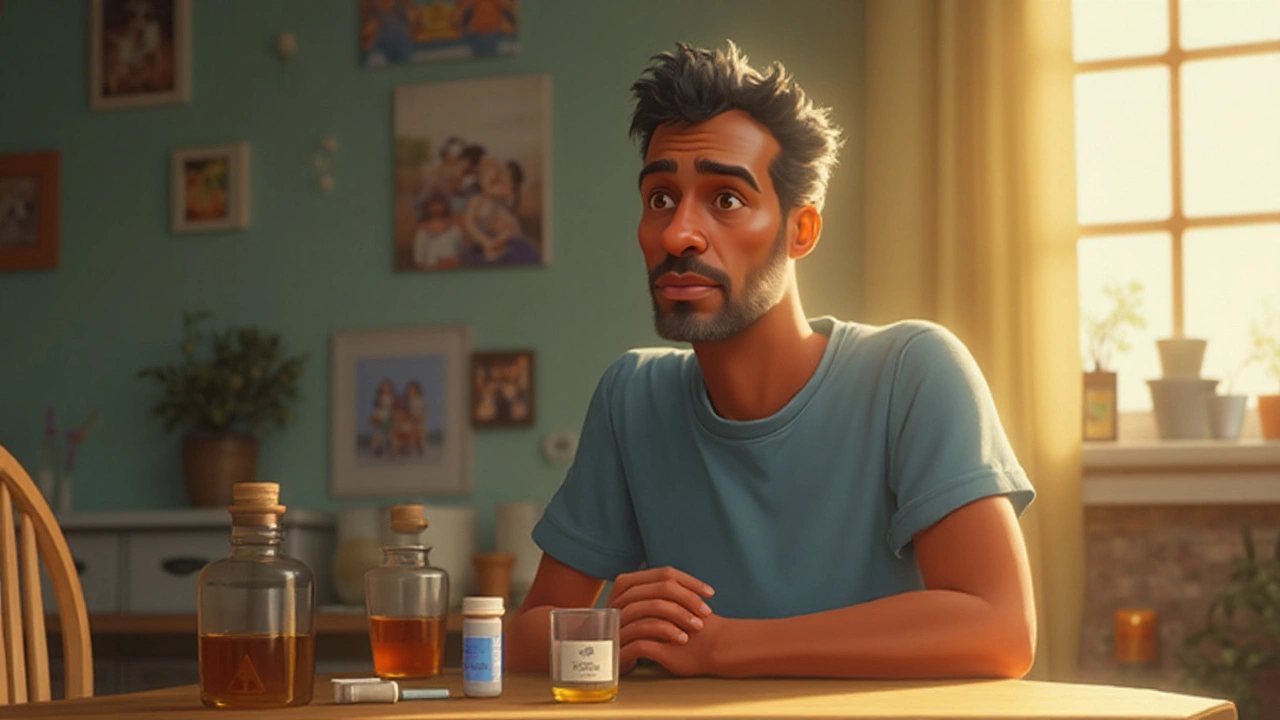Alcohol Cravings: Simple Ways to Tame the Urge
If you’ve tried to cut back or quit drinking, you know cravings can feel like an unwelcome guest that shows up at the worst times. The good news is that cravings are a signal your brain is sending, not a sign you’ve failed. By understanding why they happen and using a few everyday tricks, you can keep the urge under control and stick to your goals.
Why Cravings Hit You
Cravings aren’t random; they’re usually linked to triggers. Stress, a social gathering, or even a certain scent can light the craving switch. Alcohol releases dopamine, the feel‑good chemical, so your brain learns to associate those cues with a quick mood boost. Over time, the habit loop—cue, routine, reward—gets hardwired, making the urge pop up when the cue appears.
Another hidden driver is blood‑sugar swings. When your glucose dips, your body reaches for quick energy, and alcohol often feels like the fastest fix. That’s why cravings can get stronger after a skipped meal or a night of poor sleep. Knowing these patterns helps you plan ahead rather than react.
Everyday Tools to Fight Cravings
1. Swap the drink. Keep a tasty, low‑calorie mocktail or sparkling water with a splash of juice at hand. The ritual of holding a glass can satisfy the habit part without the alcohol.
2. Stay hydrated. Dehydration mimics thirst and can be mistaken for a craving. Drink a glass of water when the urge strikes; wait a few minutes and see if it fades.
3. Eat protein‑rich snacks. A handful of nuts or a piece of cheese stabilizes blood sugar and reduces the need for a quick alcohol buzz.
4. Shift focus. Short, brisk walks, a few minutes of deep breathing, or a quick set of stretches can break the mental loop. The goal is to give your brain a new pattern to follow.
5. Mind the environment. If a certain bar or friend’s house triggers you, set a clear plan—maybe meet elsewhere or bring a non‑alcoholic drink you enjoy.
6. Talk it out. Sharing how you feel with a trusted friend or a support group can lower the intensity of the urge. When you verbalize the craving, it loses some of its power.
7. Consider medication support. For some, prescriptions like varenicline or naltrexone can lessen the rewarding feeling of alcohol. Always discuss options with a doctor to find what fits your health profile.
Remember, cravings usually peak within 5‑10 minutes and then fade. The trick is to ride them out with a distraction or a healthier alternative. If you slip, don’t view it as a failure—just note what triggered it and adjust your plan.
Staying mindful of your triggers, keeping your body nourished, and having a go‑to replacement drink are all low‑effort ways to keep cravings in check. Over time, the brain rewires, and the urge becomes less urgent. Keep experimenting with what works for you, and you’ll find the cravings lose their grip.

Naltrexone for Alcohol Cravings: How It Cuts the Urge
Explore how naltrexone reduces alcohol cravings, who benefits, safety tips, and how it stacks up against other meds for alcohol use disorder.